Filter by
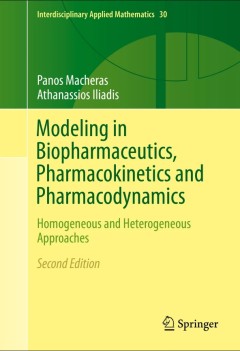
Modeling in Biopharmaceutics, Pharmacokinetics and Pharmacodynamics
The state of the art in Biopharmaceutics, Pharmacokinetics, and Pharmacodynamics Modeling is presented in this new second edition book. It shows how advanced physical and mathematical methods can expand classical models in order to cover heterogeneous drug-biological processes and therapeutic effects in the body.The book is divided into four parts; the first deals with the fundamental principle…
- Edition
- 2
- ISBN/ISSN
- 978-3-319-27596-3
- Collation
- XXII, 483
- Series Title
- Interdisciplinary Applied Mathematics
- Call Number
- -
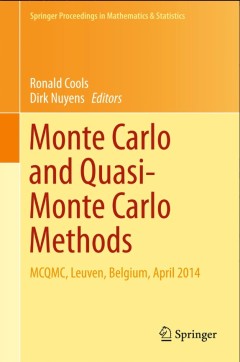
Monte Carlo and Quasi-Monte Carlo Methods
This book presents the refereed proceedings of the Eleventh International Conference on Monte Carlo and Quasi-Monte Carlo Methods in Scientific Computing that was held at the University of Leuven (Belgium) in April 2014. These biennial conferences are major events for Monte Carlo and quasi-Monte Carlo researchers. The proceedings include articles based on invited lectures as well as carefully s…
- Edition
- 1
- ISBN/ISSN
- 978-3-319-33507-0
- Collation
- XVIII, 622
- Series Title
- Springer Proceedings in Mathematics & Statistics
- Call Number
- -

Models, Algorithms and Technologies for Network Analysis:NET 2014, Nizhny Nov…
The contributions in this volume cover a broad range of topics including maximum cliques, graph coloring, data mining, brain networks, Steiner forest, logistic and supply chain networks. Network algorithms and their applications to market graphs, manufacturing problems, internet networks and social networks are highlighted. The "Fourth International Conference in Network Analysis," held at the …
- Edition
- 1
- ISBN/ISSN
- 978-3-319-29606-7
- Collation
- XVI, 340
- Series Title
- Springer Proceedings in Mathematics & Statistics
- Call Number
- -
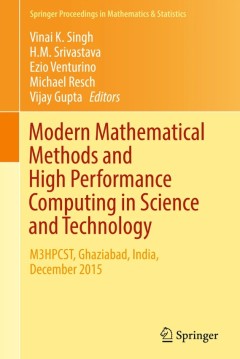
Modern Mathematical Methods and High Performance Computing in Science and Tec…
The book discusses important results in modern mathematical models and high performance computing, such as applied operations research, simulation of operations, statistical modeling and applications, invisibility regions and regular meta-materials, unmanned vehicles, modern radar techniques/SAR imaging, satellite remote sensing, coding, and robotic systems. Furthermore, it is valuable as a ref…
- Edition
- 1
- ISBN/ISSN
- 978-981-10-1453-6
- Collation
- XXI, 309
- Series Title
- Springer Proceedings in Mathematics & Statistics
- Call Number
- -
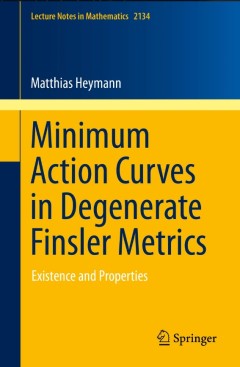
Minimum Action Curves in Degenerate Finsler Metrics
Presenting a study of geometric action functionals (i.e., non-negative functionals on the space of unparameterized oriented rectifiable curves), this monograph focuses on the subclass of those functionals whose local action is a degenerate type of Finsler metric that may vanish in certain directions, allowing for curves with positive Euclidean length but with zero action. For such functionals, …
- Edition
- 1
- ISBN/ISSN
- 978-3-319-17752-6
- Collation
- XV, 186
- Series Title
- Lecture Notes in Mathematics
- Call Number
- -
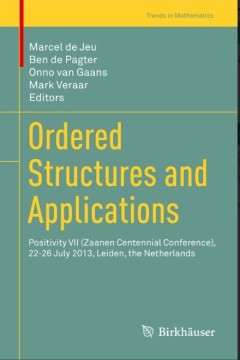
Ordered Structures and Applications : Positivity VII (Zaanen Centennial Confe…
This book presents the proceedings of Positivity VII, held from 22-26 July 2013, in Leiden, the Netherlands. Positivity is the mathematical field concerned with ordered structures and their applications in the broadest sense of the word. A biyearly series of conferences is devoted to presenting the latest developments in this lively and growing discipline. The lectures at the conference covered…
- Edition
- -
- ISBN/ISSN
- 978-3-319-27842-1
- Collation
- -
- Series Title
- Trends in Mathematics
- Call Number
- 510 ORD
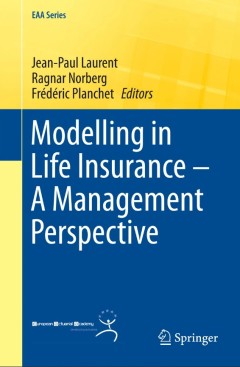
Modelling in Life Insurance – A Management Perspective
Focusing on life insurance and pensions, this book addresses various aspects of modelling in modern insurance: insurance liabilities; asset-liability management; securitization, hedging, and investment strategies. With contributions from internationally renowned academics in actuarial science, finance, and management science and key people in major life insurance and reinsurance companies, ther…
- Edition
- 1
- ISBN/ISSN
- 978-3-319-29774-3
- Collation
- XVI, 255
- Series Title
- EAA Series
- Call Number
- -

Elementary Mathematics from a Higher Standpoint Volume I: Arithmetic, Algebr…
These three volumes constitute the first complete English translation of Felix Klein’s seminal series “Elementarmathematik vom höheren Standpunkte aus”. “Complete” has a twofold meaning here: First, there now exists a translation of volume III into English, while until today the only translation had been into Chinese. Second, the English versions of volume I and II had omitted sev…
- Edition
- 1
- ISBN/ISSN
- 978-3-662-49442-4
- Collation
- 125 b/w illustrations
- Series Title
- -
- Call Number
- -

Elementary Mathematics from a Higher Standpoint Volume III: Precision Mathem…
These three volumes constitute the first complete English translation of Felix Klein’s seminal series “Elementarmathematik vom höheren Standpunkte aus”. “Complete” has a twofold meaning here: First, there now exists a translation of volume III into English, while until today the only translation had been into Chinese. Second, the English versions of volume I and II had omitted severa…
- Edition
- 1
- ISBN/ISSN
- 978-3-662-49439-4
- Collation
- 156 b/w illustrations
- Series Title
- -
- Call Number
- -

Elementary Functions Algorithms and Implementation
This textbook presents the concepts and tools necessary to understand, build, and implement algorithms for computing elementary functions (e.g., logarithms, exponentials, and the trigonometric functions). Both hardware- and software-oriented algorithms are included, along with issues related to accurate floating-point implementation. This third edition has been updated and expanded to incorpo…
- Edition
- 1
- ISBN/ISSN
- 978-1-4899-7983-4
- Collation
- 40 b/w illustrations
- Series Title
- -
- Call Number
- -
 Computer Science, Information & General Works
Computer Science, Information & General Works  Philosophy & Psychology
Philosophy & Psychology  Religion
Religion  Social Sciences
Social Sciences  Language
Language  Pure Science
Pure Science  Applied Sciences
Applied Sciences  Art & Recreation
Art & Recreation  Literature
Literature  History & Geography
History & Geography